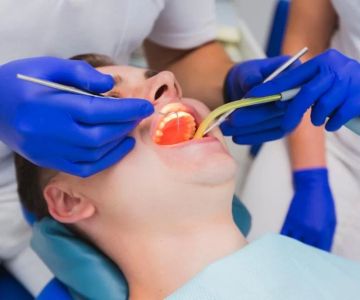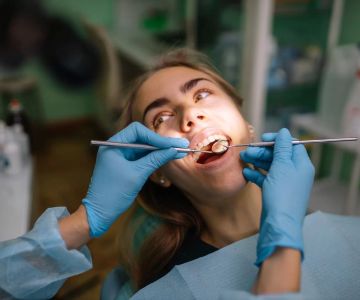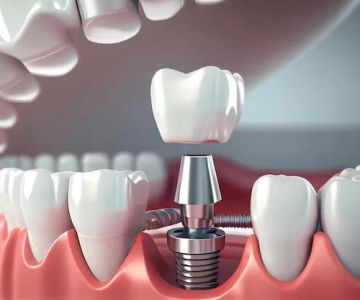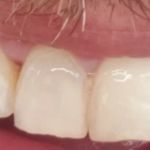How to Reduce Plaque Buildup on Teeth: Essential Tips for a Cleaner, Healthier Smile
- Understanding Plaque Buildup on Teeth
- What Causes Plaque Buildup?
- How to Reduce Plaque Buildup on Teeth
- Effective Brushing Techniques for Plaque Control
- The Importance of Flossing in Plaque Prevention
- Dietary Tips to Help Reduce Plaque Formation
- The Role of Professional Teeth Cleaning
Understanding Plaque Buildup on Teeth
Plaque is a sticky, colorless film of bacteria that forms on your teeth and gums. Over time, it hardens into tartar, which can only be removed by a dentist. If not properly cleaned, plaque can lead to cavities, gum disease, and bad breath. Reducing plaque buildup is crucial for maintaining oral health and avoiding costly dental procedures.
What is Plaque?
Plaque forms naturally throughout the day, especially after eating. It's made up of food particles, saliva, and bacteria that stick to the teeth. Plaque is the primary cause of tooth decay and gum disease, making it important to remove it regularly.
What Causes Plaque Buildup?
Plaque buildup occurs when food particles, especially sugar and starch, mix with bacteria in your mouth. These bacteria produce acid, which can erode tooth enamel and cause gum irritation. The following factors can contribute to increased plaque buildup:
1. Poor Oral Hygiene
Inadequate brushing and flossing allow plaque to build up, as it’s not being removed regularly. Skipping brushing or only brushing once a day can allow plaque to accumulate more quickly.
2. Diet High in Sugar and Starches
Foods that are high in sugar and starches, such as sweets, bread, and soft drinks, fuel bacteria in the mouth, promoting plaque formation.
3. Smoking and Tobacco Use
Using tobacco products can lead to plaque buildup and tartar formation, as well as increase the risk of gum disease.
4. Lack of Regular Dental Visits
Regular dental checkups and cleanings are essential for keeping plaque in check. Without professional cleaning, plaque can harden into tartar, which requires more intensive cleaning procedures.
How to Reduce Plaque Buildup on Teeth
Reducing plaque buildup is a matter of adopting consistent habits and practices that can keep your teeth and gums healthy. Here are some essential tips:
1. Brush Your Teeth Regularly
Brushing your teeth twice a day for at least two minutes is the first line of defense against plaque buildup. Use a soft-bristled toothbrush and fluoride toothpaste to effectively remove plaque. Ensure that you brush all areas of your teeth, including the back and chewing surfaces.
2. Use a Plaque-Control Mouthwash
Using an antibacterial mouthwash can help reduce plaque formation and control bacteria in the mouth. Choose a mouthwash with fluoride for extra protection against plaque and cavities.
3. Stay Hydrated
Drinking plenty of water throughout the day helps wash away food particles and bacteria from the mouth, reducing plaque buildup. It also stimulates saliva production, which neutralizes acids and protects your teeth.
4. Avoid Snacking Frequently
Frequent snacking throughout the day increases plaque buildup. If you do need a snack, choose healthy options like fruits, vegetables, or nuts, which help clean your teeth and do not contribute to plaque formation.
Effective Brushing Techniques for Plaque Control
How you brush your teeth is just as important as how often you brush. Here’s how to ensure that your brushing routine is effective in reducing plaque buildup:
1. Use the Right Toothbrush
A toothbrush with soft bristles is recommended to avoid damaging your gums. Electric toothbrushes with rotating or vibrating heads can be more effective in removing plaque compared to manual brushing.
2. The Proper Brushing Technique
Hold your toothbrush at a 45-degree angle to your gums and gently move it back and forth in short strokes. Don’t brush too hard, as this can irritate your gums and wear down enamel. Make sure to clean every surface of your teeth, including the outer, inner, and chewing surfaces.
3. Replace Your Toothbrush Regularly
Replace your toothbrush or toothbrush head every three to four months or sooner if the bristles become frayed. A worn-out toothbrush will be less effective at cleaning plaque.
The Importance of Flossing in Plaque Prevention
Flossing is essential for removing plaque from between your teeth, where a toothbrush often can’t reach. Regular flossing can help prevent the buildup of plaque and tartar, reducing your risk of cavities and gum disease.
How to Floss Properly
Take about 18 inches of dental floss and wrap most of it around your middle fingers. Gently slide the floss between your teeth and move it up and down along each side of your teeth. Be sure to floss behind your last tooth and along the gum line.
Flossing Frequency
Floss at least once a day, ideally before brushing, to remove plaque and food particles from between your teeth.
Dietary Tips to Help Reduce Plaque Formation
Your diet plays a significant role in the formation of plaque. By eating the right foods, you can help reduce plaque buildup and maintain better oral health:
1. Eat More Fiber-Rich Foods
Foods rich in fiber, such as fruits, vegetables, and whole grains, naturally help scrub plaque from your teeth as you chew. They also stimulate saliva production, which helps neutralize acids in your mouth.
2. Reduce Sugary Foods and Drinks
Consuming sugary foods and drinks increases the production of harmful acids in your mouth, which fuel plaque-forming bacteria. Try to limit your intake of sugary snacks, soft drinks, and processed foods.
3. Drink Green Tea
Green tea contains antioxidants that can help reduce plaque and fight bad bacteria in the mouth. Drinking unsweetened green tea can provide oral health benefits without the added sugar.
The Role of Professional Teeth Cleaning
Even with excellent at-home oral hygiene, plaque and tartar can still accumulate over time. Regular visits to your dentist for professional teeth cleaning are essential for keeping plaque in check and preventing tartar buildup.
How Often Should You Visit the Dentist?
It’s recommended to visit your dentist for a cleaning every six months, or more frequently if you are prone to plaque buildup. Your dentist will use special tools to remove tartar and plaque from areas that are difficult to reach with a toothbrush.
If you're looking for ways to enhance your oral hygiene routine and reduce plaque buildup on your teeth, visit Dentistry Toothtruth for the latest products and tips to help keep your smile healthy and bright.







 Maui Whitening Orlando4.0 (32 review)
Maui Whitening Orlando4.0 (32 review) Bloomington Southside Dental Care3.0 (26 review)
Bloomington Southside Dental Care3.0 (26 review) Christiana Dental Center4.0 (650 review)
Christiana Dental Center4.0 (650 review) Carolina Dental Arts - New Bern Ave4.0 (152 review)
Carolina Dental Arts - New Bern Ave4.0 (152 review) Equitas Health Short North Medical Center3.0 (96 review)
Equitas Health Short North Medical Center3.0 (96 review) Prosthodontics of Madison - Kendra Schaefer, DMD & Christine Roenitz, DMD4.0 (25 review)
Prosthodontics of Madison - Kendra Schaefer, DMD & Christine Roenitz, DMD4.0 (25 review) The Importance of Oral Health Education During Pregnancy for a Healthy Pregnancy
The Importance of Oral Health Education During Pregnancy for a Healthy Pregnancy Best Tips for Brushing Your Teeth Properly for Healthy Gums: Essential Techniques for Oral Health
Best Tips for Brushing Your Teeth Properly for Healthy Gums: Essential Techniques for Oral Health Why Skipping Dental Checkups Can Lead to Bigger Oral Health Problems
Why Skipping Dental Checkups Can Lead to Bigger Oral Health Problems Advantages of Porcelain Dental Restorations
Advantages of Porcelain Dental Restorations How Can Diabetes Cause Tooth and Gum Problems? Preventing and Managing Oral Health Issues
How Can Diabetes Cause Tooth and Gum Problems? Preventing and Managing Oral Health Issues Healthy Habits for Promoting Good Oral Health and Hygiene: Tips for a Healthy Smile
Healthy Habits for Promoting Good Oral Health and Hygiene: Tips for a Healthy Smile